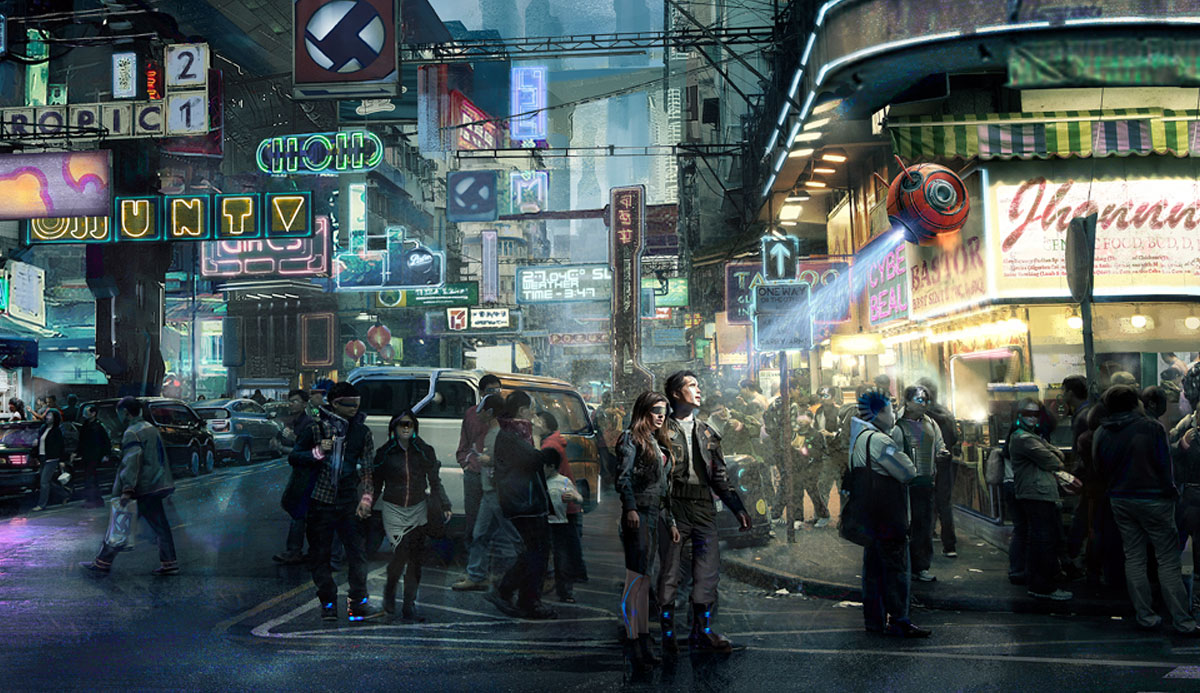ABOUT THE GAME
STORY ELEMENT AND PLAYER CHARACTERS
The game is based on the struggle between two powerful mega corporations that takes place in the title tower. In HINT you lead a team of selected professionals of a given Faction. Each of them has unique skills and abilities; each one can be given weapons, other equipment and can be enhanced cybernetically. All characteristics and modifiers are presented on special character and equipment cards (to avoid flick through the rulebook). Each character card has a limited number of slots that can be filled with equipment and cyberware modifications. The player can purchase additional equipment to replace a current item depending on the “Team’s assets”. A short bio of each protagonist is will allow the player to identify themselves with the characters. You may like them or hate them but they will no longer be just anonymous pawns.
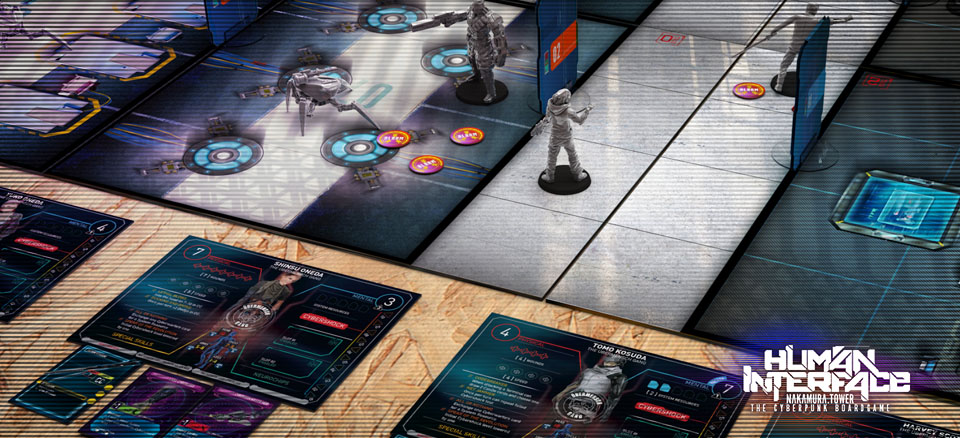
Characters have only two key skills, Physical Skill and Mental Skill to cover their actions and abilities. However, the Special Skills of characters and their Faction, together with cyberware, Neurochips and weapons gives a wide variation in abilities.
It was decided that the tracking of ammunition for the wide range of weapons was an unnecessary complication except for a few specialist weapons with limited number of uses. It can be assumed that the characters carry a significant amount of ammunition with them and that some missions involve getting to an armoury where ammunition can be readily replenished.
FACTIONS
Two main factions are available in the basic version of the game (Ubermensch Mercenaries and Nakamura Corporation), each with characters possessing unique abilities. Every character has its own card with modifiers and equipment. The characters may be equipped with additional items and cyberware depending on the mission and Team’s budget that allows Players to match characters to their own gaming style.
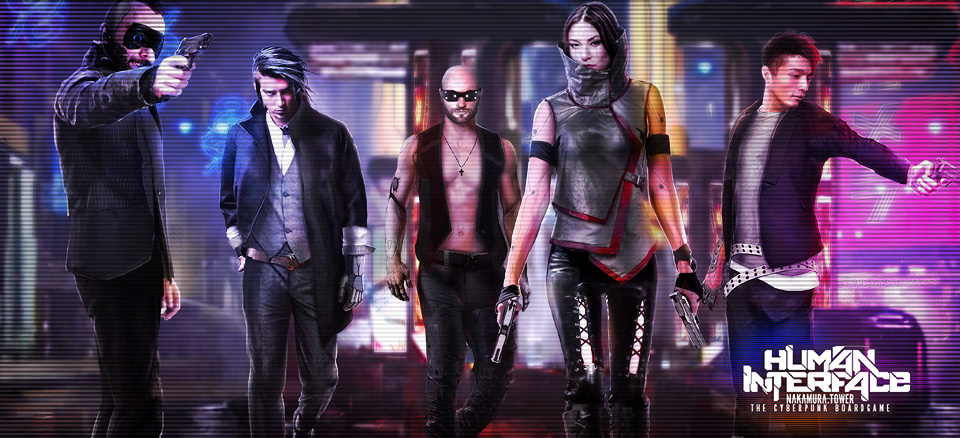
THE THIRD PARTY
Playing against both players is the Nakamura Tower’s defence system. After the first Mission, when the nanovirus was introduced into the defence system’s code making it unstable, it will attack any humans that it finds (it is controlled by a game AI system and not the Players). Its drones, hybrids and avatars move and attack all player characters according to a simple algorithm. The game also offers a single-player option. In such case you play against the board and its mechanics, however, the mission details are very different from two and multi-player versions.
CYBERNETIC AUGMENTATIONS
Cybernetic augmentations, generally known as cyberware, and Neurochips granting advantages on the battlefield are the essence of the characters. But nothing comes for free! Each piece of cyberware may increase the vulnerability of the character to Cybershock, crossing of the border beyond which our characters are no longer human. Depending on the situation humanity tests can be made every turn. A failed test increases the level of Cyberpsychosis and crossing the limit will turn the character into a mindless drone. The resistance to Cybershock is based upon a character’s Mental Skill which is given on each card and varies between characters.
THE GAME BOARD
The game is played on a board constructed from the modular square tiles. This creates the interior of the Nakamura corporate tower that is under attack by its rivals. The characters are moved using large squares on the board. This eliminates the need to measure distance when moving and fighting thus quickening the pace of the game and to avoid misunderstandings. Each room presents a specific tactical situation that influences the characters placed on it.
CARDS
All important information is placed on cards so that you don’t need to check the rulebook all of the time. Character, equipment, cyberware and mission cards have all the descriptions and modifiers you need to play the game. This way all of the important information is always at hand and presented in an attractive form. Also the well-developed Cyberwarfare aspect is also based on cards.
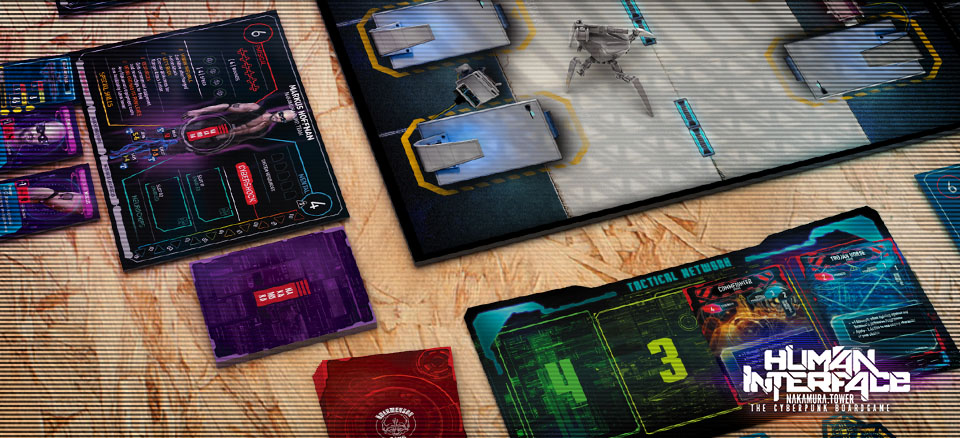
The rules do not use dice; instead the testing mechanics are based on cards that we call CanDo with a value that influences the final result of the test. The numerical value also defines the location of a hit or additional effects related to the test.
CYBER-WARFARE
What makes HINT so unique is the division of events between those that happen in the real world (on the board) and those that take place in the virtual cyber world. Both influence one another and an advantage in the cyber world grants a significant bonus to actions that take place in reality. Hacking terminals, attacking enemy tactical networks and characters, uploading viruses and many other actions are performed using mechanics similar to card games.
MECHANICS
Game mechanics are fairly easy as we wanted to achieve a perfect balance between a fun game and rules that enable a lot of tactical possibilities. The basic rules are easy to learn but the possibilities of their use grow significantly in combination with the characters’ skills and capabilities of equipment. The characters do not have predefined characteristics (like attack, defence, intelligence etc.). We assume that such professionals will always hit a stationary target while shooting from a standing position. The characters are defined by their basic Physical and Mental Skills and modifiers, which make it easier or more difficult to perform some tasks. These modifiers result from their skills, special training or cyberware and other equipment.
MECHANICS
- 21 Highly detailed 32mm metal miniatures
- 5 Übermensch gang – Tomo Kosuda, Harvey Scott, Shoko Takayama, Shinsu Oneda, Yuko Oneda
- 5 Nakamura Corporation team – Yukio Nakamura, Lupu Reck, Tetsuo Kenji, Werner Kube, Markus Hoffman
- 11 Nakamura Defence system – AI Avatar, 5 x Muramasa Drones, 5 x Masamune Drones
- over 200 cards
- 13 character ID cards
- 86 Cyberwarfare cards
- 60 weapon and equipment cards
- 40 CanDo cards
- 4 x Terminal cards
- 16 x game board tiles, double sided 8” x 8”
- 2 x Tactical Network cards
- 21 x doors with plastic stands
- over 300 markers and tokens
- plastic bases for miniatures
- Mission book
- Rulebook
